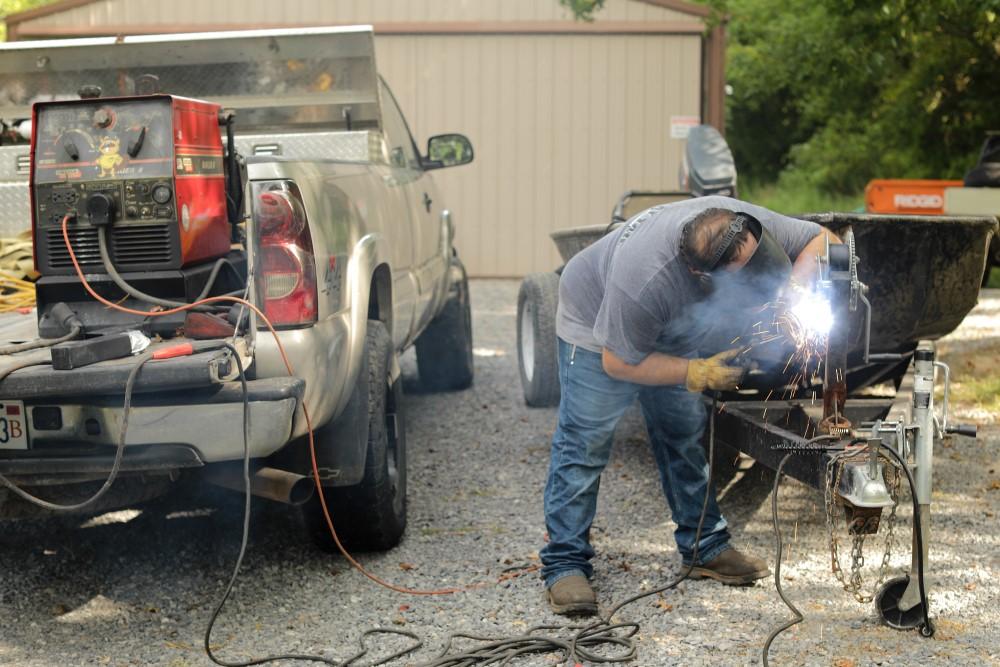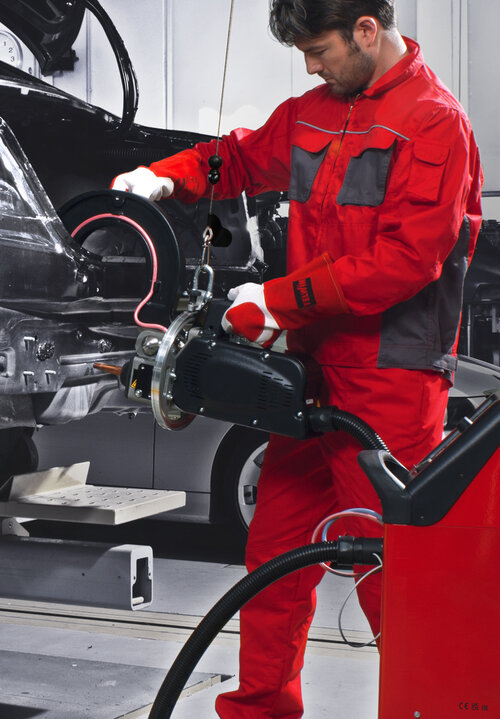Ways to minimize distortion in Montana Mobile Welding and Repair Welding projects
Wiki Article
Everything about Welding: Secret Insights Into Techniques and Ideal Practices for Success
Welding encompasses a range of techniques, each suited for particular materials and applications. Understanding these techniques, such as GMAW, SMAW, and TIG, is necessary for achieving suitable outcomes. The best equipment and safety practices can not be forgotten. As preparation and fixing play essential duties in the welding procedure, mastering these aspects can considerably improve the top quality of the end product. What are the crucial variables that guarantee an effective weld?Recognizing Different Welding Strategies
Welding methods include a selection of approaches, each suited to specific applications and materials. Among the most common techniques are Gas Metal Arc Welding (GMAW), Secured Metal Arc Welding (SMAW), and Tungsten Inert Gas Welding (TIG) GMAW, also called MIG welding, is popular for its speed and flexibility, making it perfect for thin products. SMAW, or stick welding, is favored for its simpleness and efficiency in outside environments, especially with thicker steels. TIG welding uses precision and control, making it suitable for complex job and non-ferrous steels (Montana Mobile Welding and Repair Belgrade). Each strategy has its distinct advantages and considerations, permitting welders to select the finest method based upon the job's requirements, material type, and desired results. Recognizing these techniques is necessary for successful weldingVital Welding Equipment and Tools
While various welding strategies need particular abilities, the appropriate equipment and devices are similarly essential for accomplishing quality outcomes. Important welding tools includes welding equipments, which differ depending upon the strategy-- such as MIG, TIG, or stick welding. Protective equipment, consisting of aprons, handwear covers, and safety helmets, guarantees safety and comfort throughout the procedure. In enhancement, fixtures and clamps aid safeguard materials in position, guaranteeing precision in welds. Consumables like welding rods, cable, and securing gas are likewise important parts that influence the high quality of the weld. Moreover, tools such as cutters and mills help with surface area prep work and post-weld ending up, adding to an expert outcome. Investing in top notch equipment ultimately boosts the efficiency and efficiency of welding projects.Security Practices in Welding
Appropriate security practices are necessary in the welding industry to protect workers from possible dangers. Welders must use suitable personal safety devices (PPE), including safety helmets with correct shading, handwear covers, and flame-resistant apparel. Sufficient air flow is important to reduce direct exposure to damaging fumes and gases generated during the welding process. Additionally, workers should be educated in the right handling of welding devices to stop crashes. Fire precaution, such as maintaining flammable materials far from the welding location and having fire extinguishers conveniently available, are needed. Routine examinations of equipment and work areas can assist identify possible hazards before they result in mishaps. By sticking to these safety and security techniques, welders can develop a more secure working environment and lessen dangers connected with their profession.Readying Products for Welding
Preparing products for welding is an essential action that substantially affects the high quality and honesty of the final product (Montana Mobile Welding and Repair Belgrade). Proper preparation involves cleaning the surfaces to get rid of impurities such as oil, corrosion, and dust, which can jeopardize the weld. Techniques such as grinding, sanding, or utilizing solvents are commonly utilized to attain a clean surface. Additionally, making sure that the materials fit together well is crucial; voids can cause weak welds. It's likewise crucial to take into account the alignment and positioning of the components, as this will influence the ease of welding and the last result. Choosing the ideal filler product and ensuring compatibility with the base metals is vital for attaining solid, resilient welds.Tips for Achieving High-Quality Welds
Attaining premium welds requires focus to detail and adherence to finest techniques throughout the welding process. Proper joint preparation is important, ensuring surfaces are tidy and free from contaminants. Choosing the proper filler product and welding technique based on the base steels is vital for optimal bonding. Preserving regular traveling rate and angle while welding can promote and stop flaws uniformity. Furthermore, managing warmth input is vital; extreme warm can bring about bending and compromised joints. Consistently inspecting the welds during the process permits instant changes if required. Employing suitable post-weld therapies, such as cleaning and tension alleviation, can improve the durability and honesty of the weld, ultimately guaranteeing an effective outcome.Troubleshooting Common Welding Issues
Welding often offers difficulties that can affect the high quality and integrity of the final product. Usual problems such as porosity, irregular weld beads, and getting too hot can occur, each requiring details fixing techniques. Comprehending these issues is necessary for welders to improve their skills and achieve ideal results.Porosity Issues Discussed
Although porosity can commonly be forgotten, it remains an important issue in welding that can jeopardize the honesty of an ended up product. Porosity refers to the existence of small gas pockets within the weld bead, which can damage the joint and lead to premature failing. This trouble generally emerges from contaminants, wetness, or incorrect protecting gas coverage during the welding procedure. To mitigate porosity, welders should confirm that the base products are dry and clean, make use of suitable protecting gases, and preserve regular welding specifications. On a regular basis inspecting the equipment and environment can likewise aid recognize possible concerns before they manifest in the weld. Resolving porosity effectively is vital for achieving strong, resilient welds that satisfy quality criteria.
Inconsistent Weld Beads
Irregular weld beads can substantially impact the top quality and strength of an ended up item. Numerous elements add to this concern, including inappropriate traveling speed, inaccurate amperage setups, and inconsistent electrode angles. When the welder relocates as well quickly, a grain may show up slim and do not see page have penetration, while relocating too slowly can create excessive buildup. Furthermore, making use of the wrong amperage can lead to either damaging or extreme spatter, both of which concession weld integrity. The welder's method, such as irregular lantern activity, can likewise cause uneven grain appearance. To mitigate these troubles, welders ought to concentrate on maintaining steady, regulated movements and making sure correct tools settings to accomplish harmony in their welds. Uniformity is crucial to attaining solid and trustworthy welds.Getting Too Hot and Bending Issues
Too much heat throughout the welding process can bring about significant overheating and deforming issues, influencing the structural honesty of the work surface. These troubles usually materialize as distortion, which can endanger placement and fit-up, making further setting up challenging. Factors adding to overheating consist of the selection of welding parameters, such as voltage and take check that a trip speed, along with the kind of product being bonded. To mitigate these problems, welders must keep consistent traveling speed and suitable heat input while keeping track of the workpiece temperature level. In addition, pre-heating or post-weld warm treatment can help reduce stress and anxieties caused by quick cooling - Belgrade. Routine assessment and adherence to finest practices are important in avoiding getting too hot and making certain the longevity and integrity of bonded frameworksFrequently Asked Concerns
What Are the Career Opportunities in the Welding Industry?
The welding sector uses varied career opportunities, consisting of settings as welders, inspectors, educators, and engineers. Specialists can operate in manufacturing, building, aerospace, and automotive fields, taking advantage of solid demand and affordable salaries in numerous roles.Exactly How Can I Boost My Welding Speed Without Compromising High Quality?
To boost welding rate without sacrificing top quality, one ought to exercise effective strategies, maintain equipment, enhance settings, and improve hand-eye coordination. Normal training and seeking comments can also substantially add to accomplishing much faster, high-quality welds.What Qualifications Are Readily Available for Welders?
Countless certifications exist for welders, including those from the American Welding Culture (AWS), the National Center for Construction Education and Research Study (NCCER), and various industry-specific companies. These credentials improve employability and demonstrate ability proficiency.How Does Welding Impact the Qualities of Metals?
Welding influences the properties of metals by altering their microstructure, which can result in changes in hardness, ductility, and stamina. Heat input and air conditioning rates during the procedure significantly impact these material qualities.Can I Weld Dissimilar Metals Together?

Report this wiki page